Page
1 | Page 2 | Page
3 | Page 4 | Page 5 | Back
to Work Page
As
Gordon Dyck says, “snagging was a completely new experience for
us prairie fellows.”
“We
always worked in teams of two. Our tools were a six or seven foot
[1.8 – 2.1 m] crosscut saw and a flask of diesel fuel to lubricate
the saw if there was a problem with pitch. Each of us had a falling
axe which was kept razor sharp. First, we always tired to determine
which way the tree wanted to fall, for if we were wrong, trouble
was sure to follow. To force a tree to go contrary to its inclinations
was almost impossible with our limited tools. It could have been
done with a hammer and wedges, but these were heavy and seldom
carried.” [ASP, 61]

Although
each CO took the necessary precautions, mishaps were inevitable.
Waldo Lepp remembers an unusual incident.
“We
prairie boys found out that BC trees were taller
than our prairie poplar. Bill Zacharias from Rosthern and John
Andres of Ontario felled a tree 230 feet [70 m] in length. It
was a short snag one day that nearly flattened a lunch kit that
had been left on a stump too close to the felling area. It was
supposed to be more visible at lunch time. I do not think there
was much left of the lunch. Naturally the rest of us shared with
the wiser victim, from lunch boxes still intact.” [ASM,
298-299]
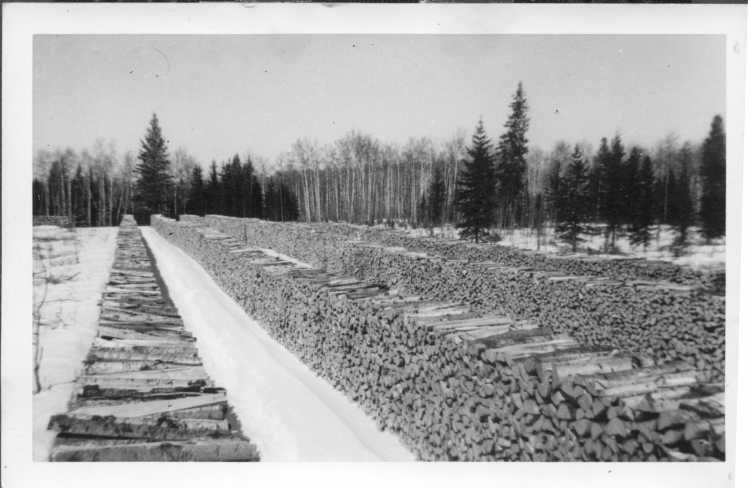 |
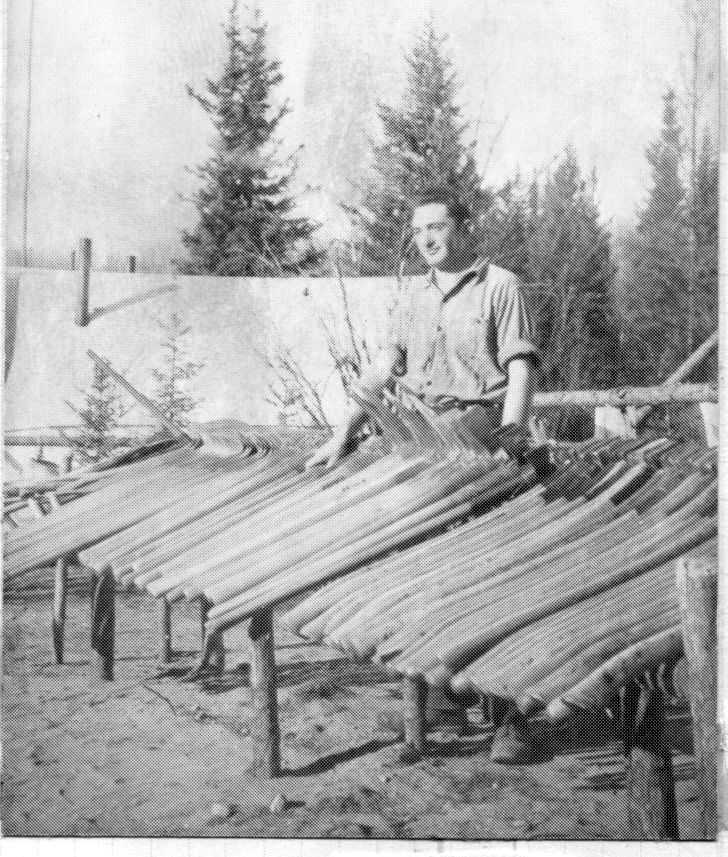 |
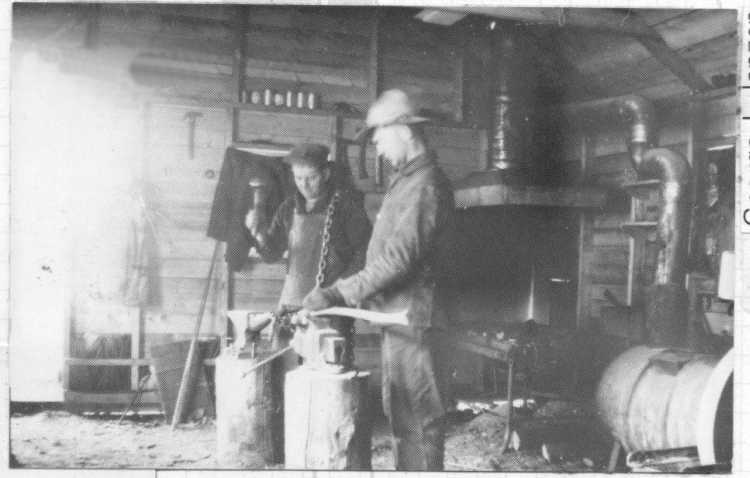 |
| Stacks of logs cut by COs |
Aron Peters standing with axes |
Blacksmith shop in Banff National Park |
The
COs came across all sorts of trees.
“Our
tree falling consisted in cutting trees that had been left behind
following a fire. Some of the larger trees had been left untouched
by the fire. Some of these were beautiful trees of six foot [1.8
m] diameter. Our cutting was all done with hand drawn cross-cut
saws. It would take nearly half a day to fall some of the big
ones. I recall a snag of about thirty feet [9 m] in height that
I and another boy cut through. It was an irregular cedar measuring
eleven feet by fifteen feet [3.3 by 4.5 m]. We cut it through,
but no manner of wedges could topple it. I suppose it is still
standing there on the stump. There was a forestry report in a
newspaper that credited our boys and those in other camps with
setting records for falling in those days. Those who were sincere
worked as unto the Lord.” [ASM, 281-283]
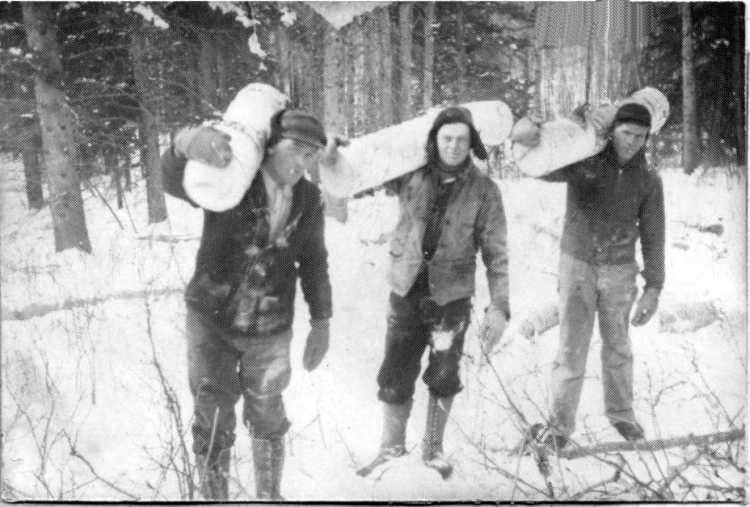 |
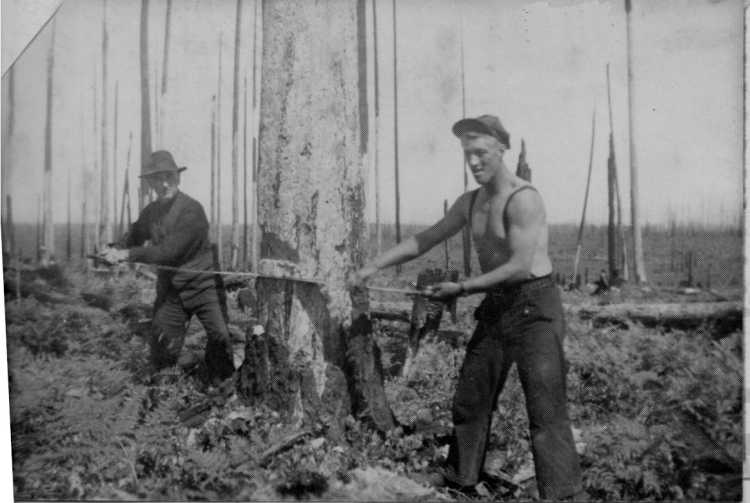 |
|
| Carrying logs at Riding Mountain National Park |
Cutting a snag |
Cutting down a huge snag |
Officials
measured productivity by measuring how many square feet the COs
cut.
“The
stumps of the trees felled by the men had to be scaled (measured)
and in this manner records were kept of the amount of work done
by each set of fallers.” [ASM, 210-218]
Dave
Ratzlaff set a record for the number of square feet cut in one
day.
“The
cutting was very hard work, at times coupled with competition
as to who could cut the most footage per day. Dave, large and
strong, had a partner Ed Enns, who was a good match. Early one
day they set up with their lunches and the adrenaline flowing,
to give their bodies the ultimate test. They sawed 240 square
feet [22 square metres] of surface cut, the highest figure on
record at camp. Dave remembered the constant battle with pitch,
the sticky substance oozing from tree wounds, in the sawing process.”
[ASP, 150]
This
record amazed the COs in other camps. The easy-going attitude
of the COs hid the fact that clearing snags was a dangerous job.
In 1943, two men died as a result of a rotten snag.
Page
1 | Page 2 | Page
3 | Page 4 | Page 5 | Back
to Work Page |


